Dogs with large flat faces (brachycephales) are at high risk of getting eye problems during their life, and sometimes very early in time, because of various reasons due to their conformation. These factors include a big ocular globe (therefore more exposed), a shallow orbital cavity (therefore the globe is less protected and can slip out from the bone socket), a short nose with skin folds (therefore the hair rub against the cornea), an hairy caroncle (small bump with some hair in the space close to the nose, therefore hair are rubbing against the cornea), a large eyelid opening (therefore the globe is more exposed).
It is therefore easy to understand that these dogs represent the breeds that are predisposed to have the following eye problems: pigmentary keratitis (superficial pigment deposition), dryness of the eye, proptosis of the globe (globe getting out from its socket) and corneal ulcers (wound of the cornea, frontal part of the eye that is transparent).
These ocular conditions can not only be painful for the animal but they can lead to the loss of vision.

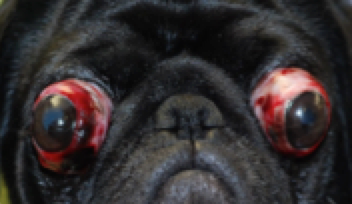
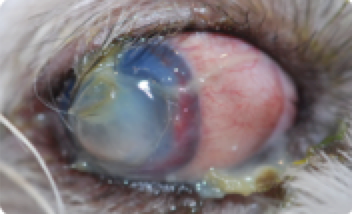
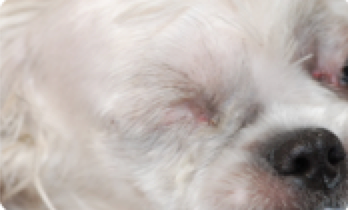
An example very common in pugs: large palpebral opening exposing a large area of the sclera (white external part of the eye), hair from the nasal folds can rub against the cornea leading to superficial brown pigment deposition in the medial aspect of the cornea. This is defined as pigmentary keratitis.
Another example in a pug: large palpebral opening that does not protect the globe adequately and therefore they got displaced forward during a frontal choc. This dislocation of the eye is called proptosis (in this case due to the pet hit by a car).
Un exemple d’ulcère fondant (plaie sur la cornée infectée) sur un Shih Tzu de 9 mois (photo de gauche).
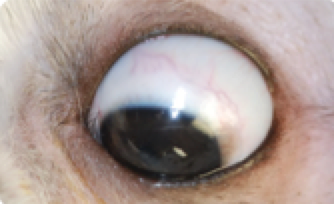
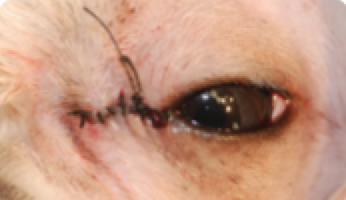
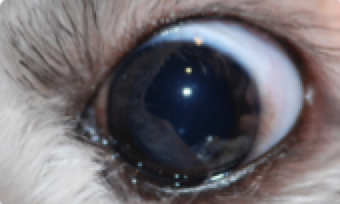

Canthoplastie médiale réalisée sur l’œil gauche du même Shih Tzu de 9 mois ayant perdu son œil droit d’un ulcère fondant (l’énucléation OD et la canthoplastie OG ont été réalisés en même temps).
Photo before surgery (photo on the left): large palpebral slit revealing a large part of the sclera. Photo 14 days after canthoplasty (photo on the right): very noticeable reduction of the palpebral cleft protecting the eyeball better.
It is easy to understand the 3 benefits of this short and simple surgical procedure that can be done by a veterinary ophthalmologist:
- Reduction of the risk of dislocation of the globe (globe proptosis) to almost zero by reducing the palpebral opening length.
- Reduction of risk of pigmentary deposition on the cornea (pigmentary keratitis) to almost zero by closing the eyelid in the corner close to the nose (medial canthoplasty)
- Reduction of the risk of corneal wound (corneal ulcers) quite considerably by reducing the palpebral opening and therefore protecting the cornea better.
In conclusion, the bilateral medial canthoplasty in puppy or young dogs from bracychephales (short nose / flat faces) breeds such as Pekingese, Shih tzu, Lhassa Apso, French bulldog, Pug, Boston Terriers, Cavalier king charles is an effective surgical treatment to prevent many possible ocular conditions than can occur in the lifetime of these dogs.

